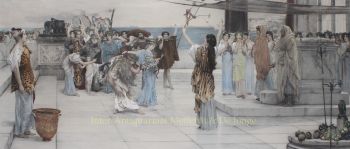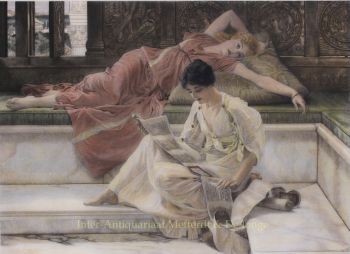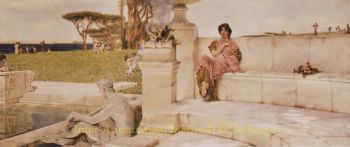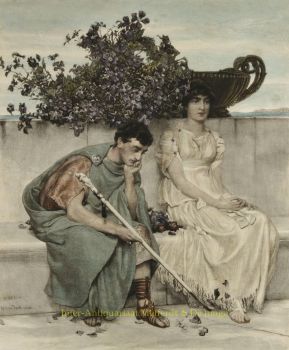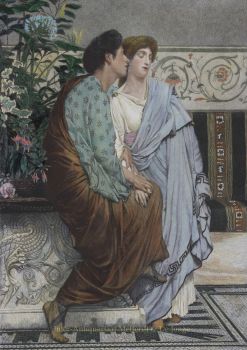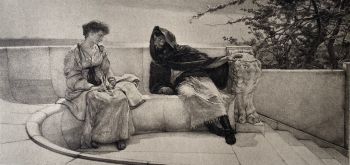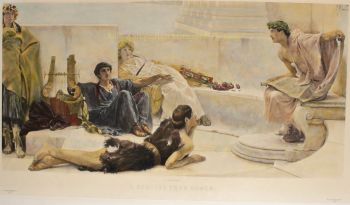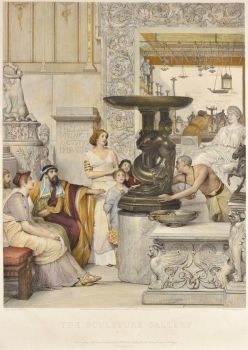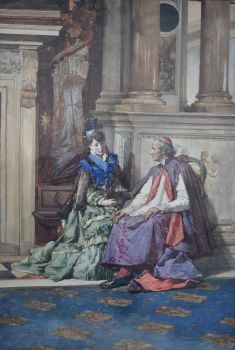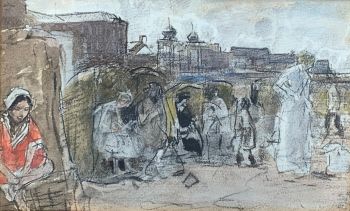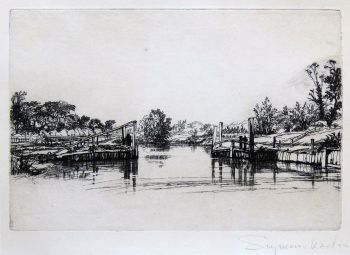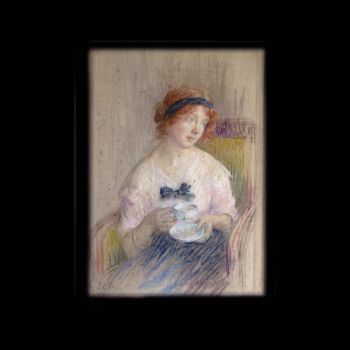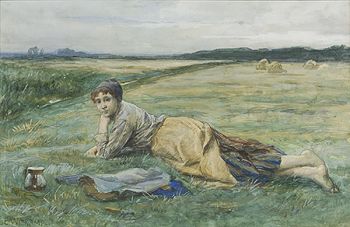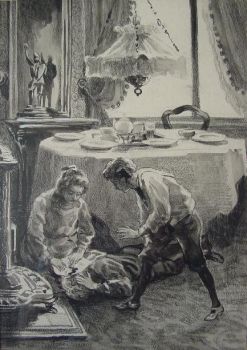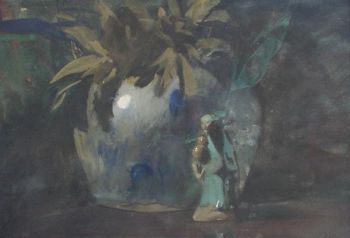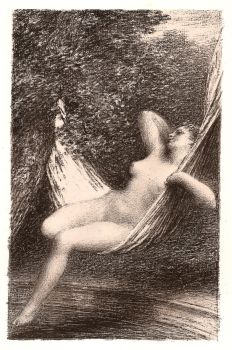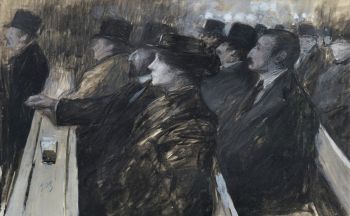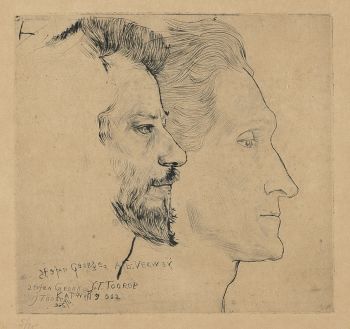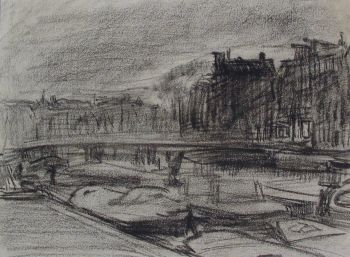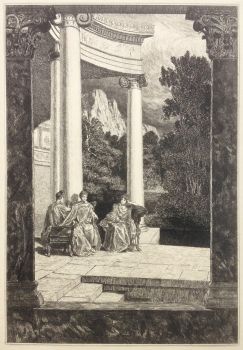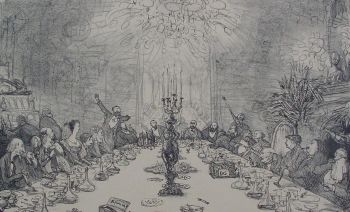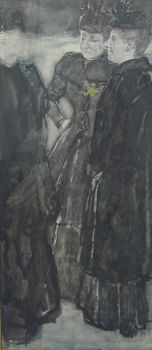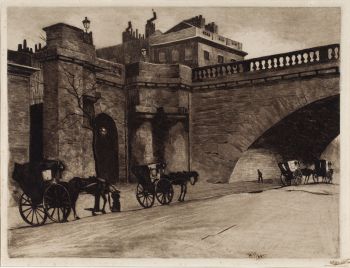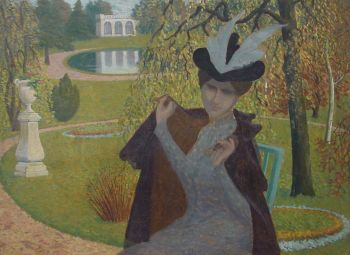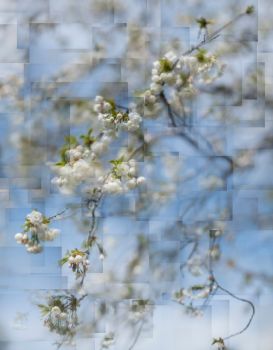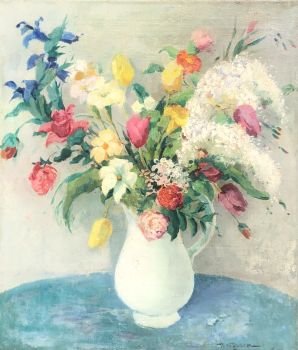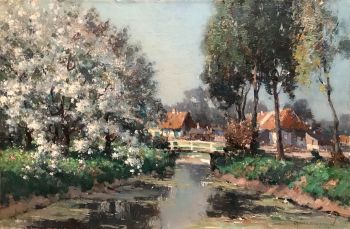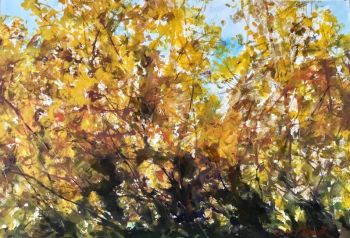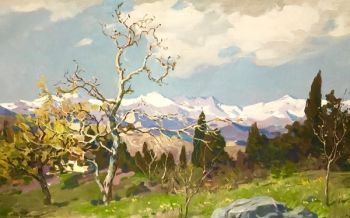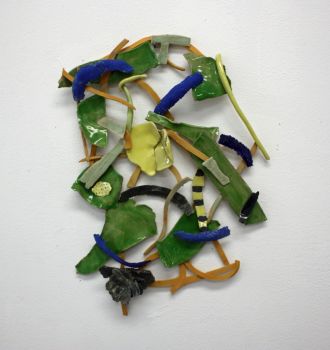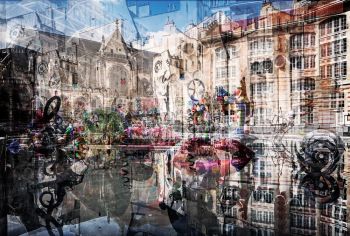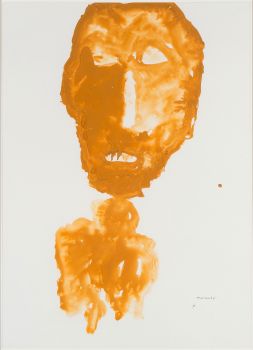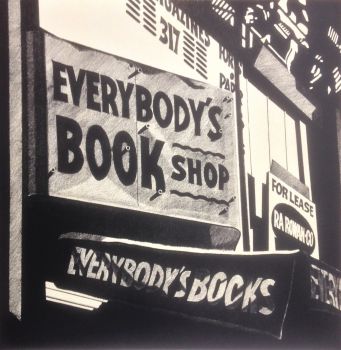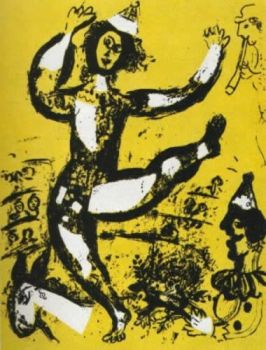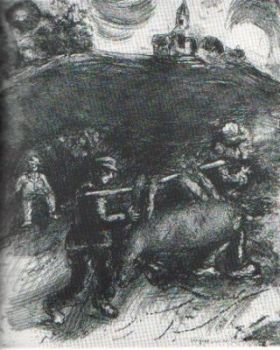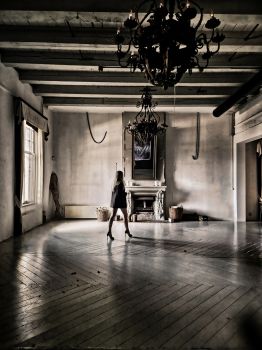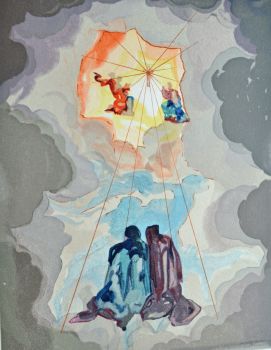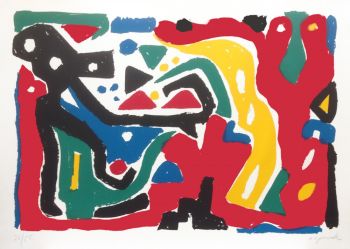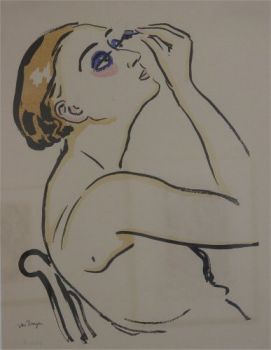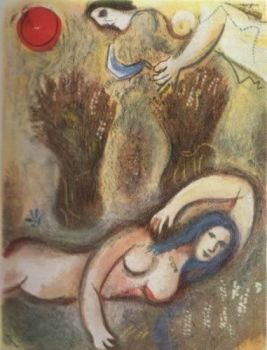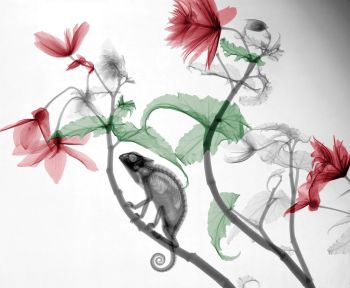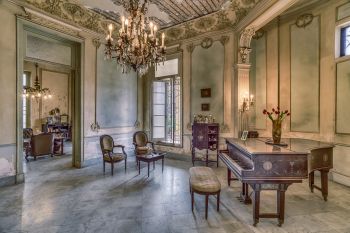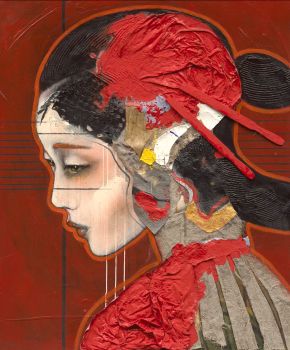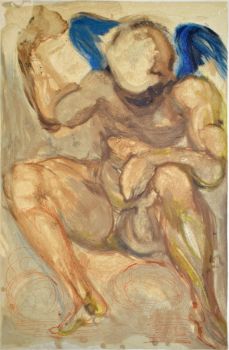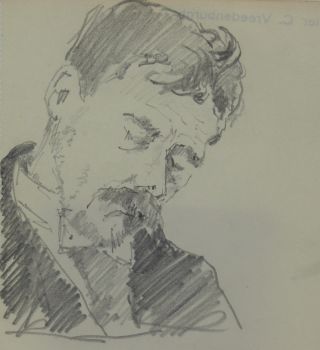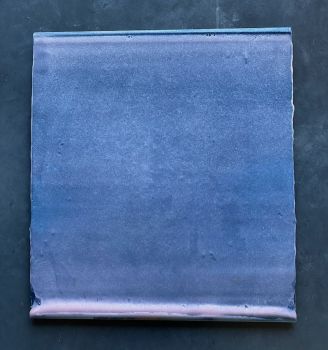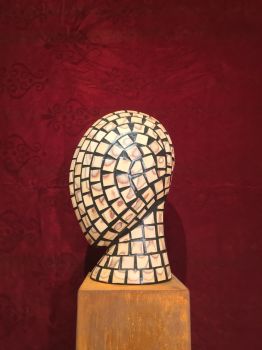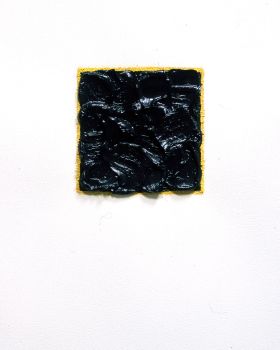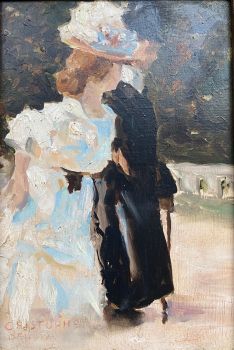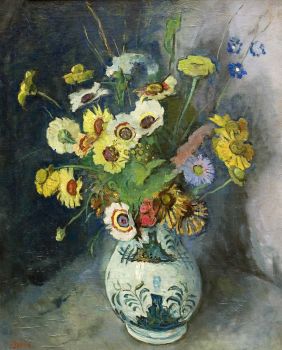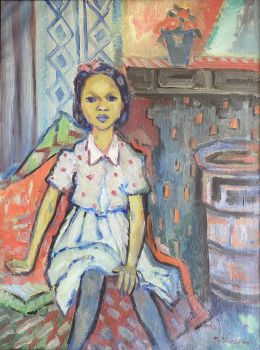Spring 1894
Lawrence Alma-Tadema
PapelImpresiónImpresión fotográfica
35 ⨯ 47 cm
ConditionVery good
Precio a consultar
Gallerease Selected
- Sobre la obra de arte
Original photogravure of the painting Spring from Sir Laurence Alma Tadema. Printed in 1894 on thick cream paper in a serie of 400 pieces by 'Photographische Gesellschaft' Image size: 15 cm by 25,5 cm Paperformat: 35 cm by 47 cm The original photogravure depics a procession of women and children descending marble stairs carry and wear brightly colored flowers. Cheering spectators fill the windows and roof of a classical building. Lawrence Alma-Tadema here represented the Victorian custom of sending children into the country to collect flowers on the morning of May 1, or May Day, but placed the scene in ancient Rome. In this way, he suggested the festival's great antiquity through architectural details, dress, sculpture, and even the musical instruments based on Roman originals. The painting was first put on display at the Royal Academy in 1895 and enjoyed great success. The picture's popularity continued over the next few years with prints very much in demand. After a memorial exhibition in 1913, the painting disappeared from the art scene, and it was not until 1970 that it made a comeback. It joined the collection of a certain Mr. Funt, an American TV personality/art collector, and it was subsequently purchased at auction by the Getty Museum in 1972. It was thought at the time to represent the realities of ancient Rome and it took pride of place in the Getty "Roman Villa" in 1974. The apparent authentic "Romanism" of the painting had even inspired certain scenes in Cecil B. De Mille's Hollywood production of "Cleopatra" of 1934. However, further research into the painting's subject and significance suggests it is more an idealised Victorian representation of spring, rather than a specific Roman festival. The scene, with a procession of young people, flowers and musical instruments, is a joyful springtime celebration. It has been likened to the Roman spring festivals: Floralia, Cerealia or Ambarvalia. The artist may have been inspired by descriptions of the spring festival in honour of Ceres or Flora as described by the Roman poet Ovid. It also corresponds to Victorian Mayday festivities, where young girls went out into the countryside and collected flowers, then carried them back in blithesome procession. Alma Tadema presents the scene as a parade in a festive jubilant setting, and it was something the people could relate to. Processions abounded in late Victorian England: receptions for visiting heads of state, royal weddings of Queen Victoria's children/grandchildren, and particularly for the queen's fifty, and then sixty, years of reign. Here, the backdrop is ancient Rome and the procession winds through shining marble passageways. Young girls carry pretty flowers or branches with buds or blossoms. Pipers are making music. Others follow carrying symbolic ritual items, including the bearers of a fine chalice, a casket and an ivory altar. Excited onlookers line the way. These beautifully detailed groups of figures and the surrounding Roman architecture are the key to the painting. Lawrence Alma Tadema was known for his glorious details; it is said that Alma Tadema compositions are the sum of his details. Looking closely, we behold richly ornamented columns and partial columns, full statues that replicate authentic Roman statues in silver and bronze, finely detailed nature elements, and above all, a dazzling feast of delicate yet vibrant spring flowers. The faithfully wrought architecture of this Tadema Rome has numerous columns, arches and balconies to seem almost like a stage set. Indeed, the artist had a background in creating grandiose stage sets for Shakespeare plays in the 1880s that amply satisfied the Victorian taste for spectacle. Against this stage-like background of white marble, and the pale, pastel clothing of the people, the strong bright colours of the flowers and garlands really stand out. The eye goes from one spot of colour to another, then, in the distance, to the red walls of the "royal box", where the viewer pauses to absorb a myriad of refined details. The impact of the picture is the contrast between vibrant colourful flowers and the stark white marble. It is the flowers that provide the most important detail, a detail that reflects the artist's well-known fondness for flowers. However, the flowers in the picture are not all Mayday blossoms; many were selected for their colours and symbolism rather than appropriateness of season. One last detail gives us an insight into the Roman period that Alma Tadema wanted to represent in his celebration of spring: the inscription and relief on the archway at centre left of the picture. The artist has reproduced the dedication sculpted on the Arch of Trajan in Benevento, near Rome, built to commemorate the opening of the Appian Way and completed during the reign of the Emperor Hadrian (reigned 117-138). This leads us to presume that the setting for Lawrence Alma Tadema's joyous "Spring" is Emperor Hadrian's prosperous Rome. Who says that art is a purely visual enjoyment? This gracious painting of "Spring" is full of fragrant air, you can almost smell the faint perfume of the darling buds of May, you can hear the light lilting music, you can feel the warming rays of the sun. "As the sun colours flowers, so art colours life". This was the artist's personal motto, and the idea is present in every Lawrence Alma Tadema composition. Originally from Holland, the young Lawrence, or Lourens as he was originally named, studied art at the Royal Academy of Antwerp. In 1870, he moved to England where he settled permanently in London. He adjusted his name to the more Britannic "Lawrence", and his Dutch origins are often overlooked. Alma-Tadema's paintings also enjoyed popularity later, when his large panoramic depictions of Greek and Roman life caught the attention of Hollywood. Certain scenes in Cecil B. DeMille's film Cleopatra (1934) were inspired by the painting Spring.
- Sobre el artista
Lawrence Alma-Tadema es uno de los artistas románticos más reconocidos de la Gran Bretaña de finales del siglo XIX. Nació en los Países Bajos como Laurens Tadema, en la familia del notario de la ciudad. Más tarde, mientras trataba de hacerse un hueco en el mundo del arte, cambió la ortografía de su nombre por el más inglés "Lawrence" e incluyó su segundo nombre "Alma" como parte de su apellido, por lo que figuraría entre las “A” en los catálogos de exposiciones.
De niño, se decidió que Alma-Tadema seguiría la carrera de abogado, pero sufrió un colapso mental y físico cuando tenía quince años. Fue diagnosticado como tísico, se le dio poco tiempo de vida y, por lo tanto, estaba libre para llevar una vida de ocio y placer. Una vez abandonado por sus propios medios, decidió estudiar arte, ya que su madre había pagado las lecciones de arte en su infancia y era uno de sus intereses. Recuperó su salud y estudió en la Real Academia de Amberes en 1852, donde ganó varios premios respetados. Su primera obra importante se exhibió en 1858, ganó muchos elogios de la crítica y causó sensación en el mundo del arte.
En 1862, se instaló en su propio estudio para seguir su carrera individual en el arte. En 1869, Alma-Tadema perdió a su esposa de seis años a causa de la viruela. Desconsolado y deprimido, dejó de pintar y su salud empeoraba. Bajo el consejo de su médico, viajó a Inglaterra para un diagnóstico médico, donde fue invitado a la casa de un colega pintor, Ford Madox Brown. Fue aquí donde vio a Laura Theresa Epps, que en ese momento tenía 17 años, y se enamoró locamente de ella. Alma-Tadema aprovechó el estallido de la guerra franco-prusiana para trasladarse a Inglaterra, donde no perdió tiempo en contactar con Laura y contratarla en clases particulares de arte. Fue durante una de estas lecciones que Alma-Tadema propuso, y se casaron poco después. Alma-Tadema tenía 34 años y la novia 18.
Alma-Tadema pasó la siguiente parte de su vida viajando por Europa y disfrutando del éxito continuo de sus pinturas. Como hombre, sus estallidos de mal genio fueron aliviados por su personalidad cálida y extrovertida y su sentido de la travesura. Trabajador perfeccionista y obsesivo, también innovó una nueva técnica de numeración, que dificultaba a los falsificadores hacer pasar obras no originales. En sus últimos años, aunque su producción artística disminuyó algo, disfrutó de un éxito continuo, convirtiéndose finalmente en uno de los pintores más ricos del siglo XIX. Fue nombrado caballero en Inglaterra en 1899.
En 1912, Alma-Tadema viajó a Alemania para someterse a un tratamiento por úlcera de estómago y murió en Alemania a la edad de 76 años. Después de su muerte, su trabajo fue mayormente ignorado. Debido a los drásticos cambios que se están produciendo en el arte, el genio artístico de Alma-Tadema no volvería a aparecer en el ojo público hasta la década de 1960. Desde entonces, su meticuloso trabajo se ha utilizado como material de partida para docenas de películas de Hollywood.
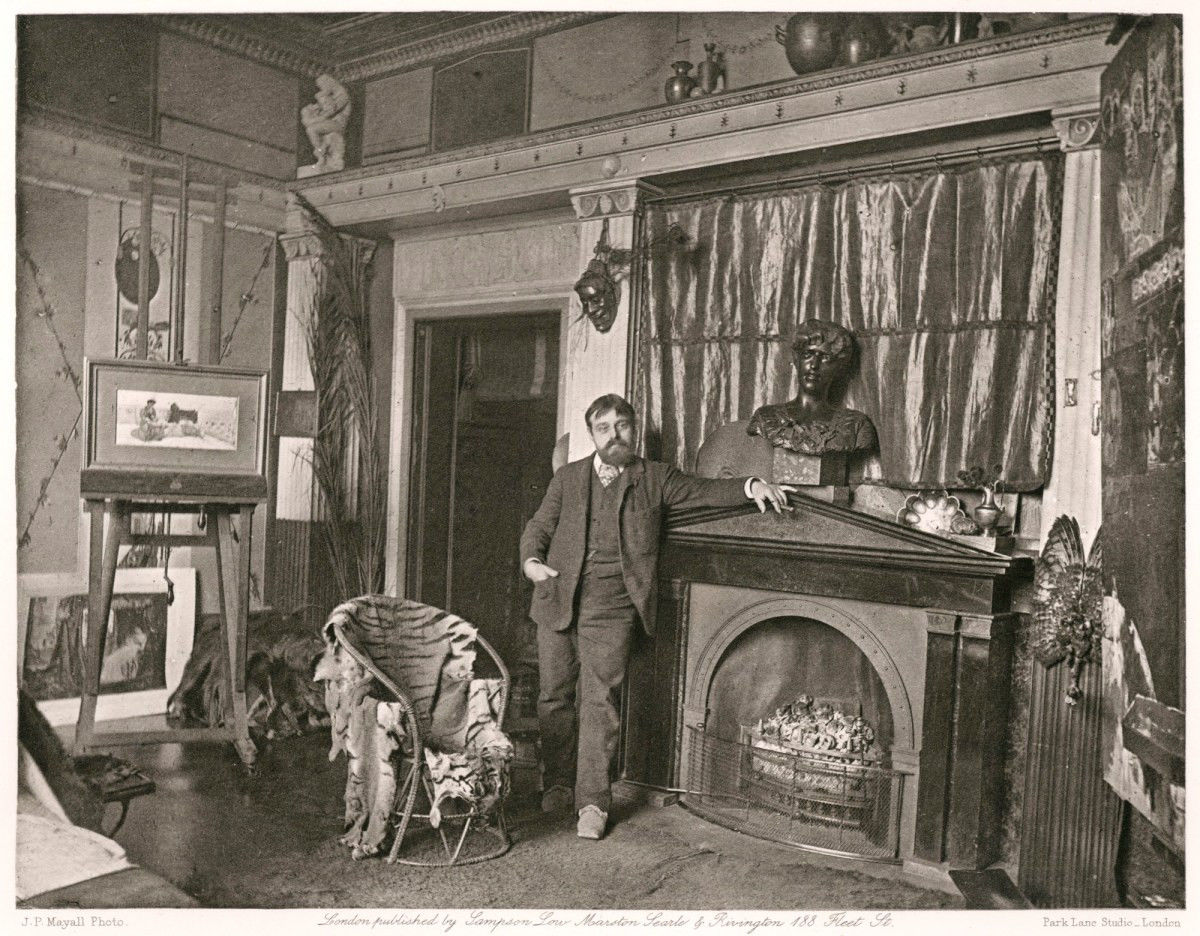
¿Está interesado en comprar esta obra de arte?
Artwork details
Related artworks
- 1 - 4 / 12
- 1 - 4 / 24
Jan Sluijters
Original illustration of Sluijters for the book: 'Laura's opstel'1881 - 1957
Precio a consultarKunsthandel Pygmalion
Jan Voerman sr
Still Life with flowers in a Chinese figurine1850 - 1900
Precio a consultarKunsthandel Pygmalion
Max Klinger
Psyche und ihre Schwestern/Psyche and her sisters1880
Precio a consultarHans den Hollander Prints
Willem Witsen
Waiting carriages in front of Waterloo Bridge1850 - 1900
Precio a consultarKunsthandel Pygmalion
Albert Clouard
Élégante à la cape (Elegant lady with a cloak)1866 - 1900
Precio a consultarKunsthandel Pygmalion
1 - 4 / 24- 1 - 4 / 8
Jack Marijnissen
The Fountains around the Centre Pompidou2013 - 2016
Precio a consultarFotogalerie Utrecht
Marc Chagall
Booz se reveille et voit Ruth a ses Pieds1952 - 1980
Precio a consultarArthouse Marc Chagall
1 - 4 / 24Hermann Nitsch
"UNDER MY SKIN" Signed book incl. small artwork and DVD in a matching box2010 - 2014
Precio a consultarGallerease Selected
1 - 4 / 12









